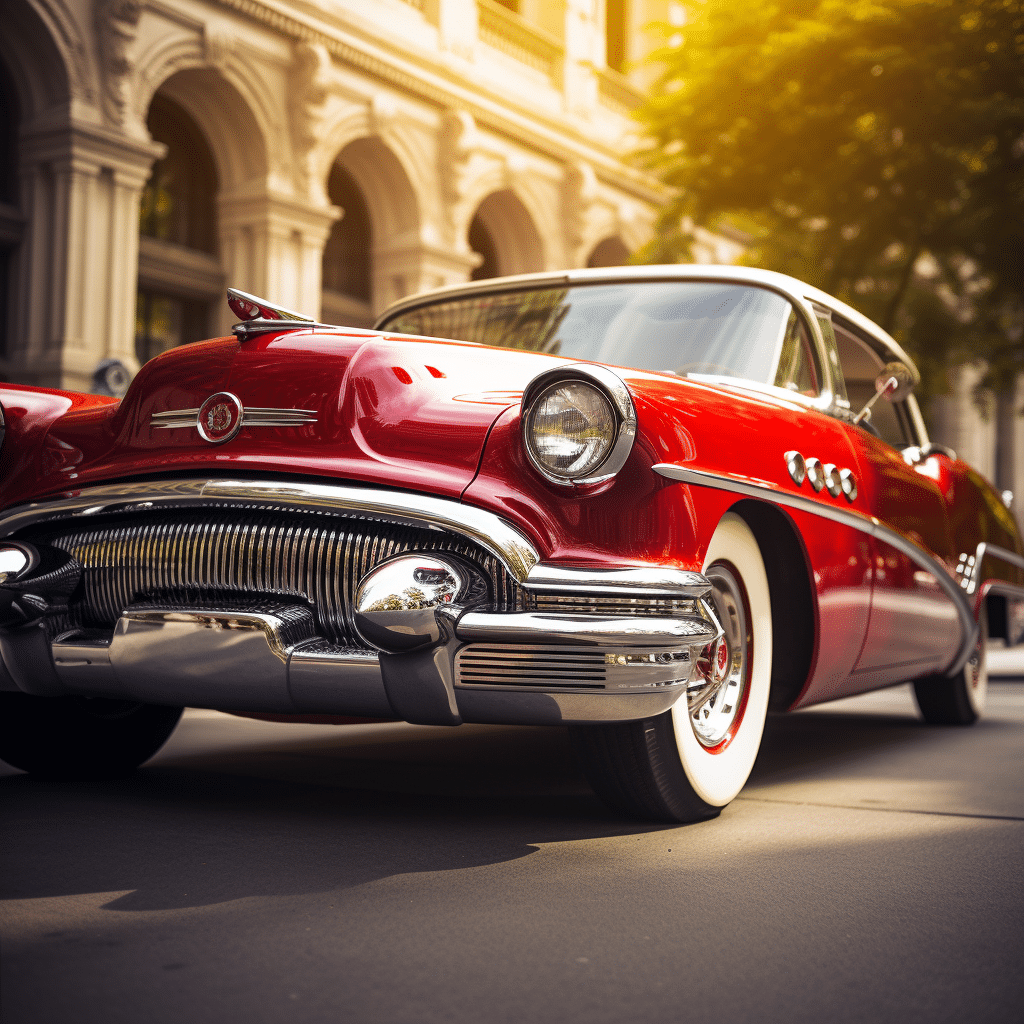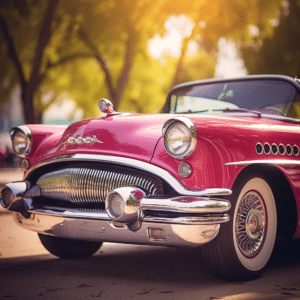
Guide to Classic Car Insurance: Vintage Beauty Protection
Classic cars have a unique place in our hearts. But, insuring these masterpieces can be tough. To protect your vintage beauty, here’s info on navigating the complex world of classic car insurance.
Standard policies don’t work for classic cars. They appreciate in value over time, so regular policies won’t cover the full worth. Specialized insurance is needed.
Factors like condition, rarity, and annual miles drive premiums. Accurate documentation and working with reputable insurers helps secure coverage tailored to your vehicle’s needs.
Take Jane’s story. She spent time and money restoring her Mustang. Then disaster struck – an uninsured driver caused an accident. Jane’s classic car insurance policy covered the repairs, so she didn’t bear any financial burden.

Understanding Classic Cars
Classic cars are a one-of-a-kind type, captivating the hearts of lovers with their everlasting allure and vintage vibe. These vehicles aren’t just old autos; they stand for history and craft. To comprehend classic cars means to go deeper into their abundant history, admire their worth, and deal with the intricacies of insuring them.
To know classic cars, there are certain aspects to consider:
- Age – 20+ years old.
- Rarity – made in limited amounts.
- Design – iconic styling.
- Condition – pristine or well-kept.
- Historical significance – cultural or historical importance.
Amongst all the information related to classic cars, some go undiscovered. For instance, these old autos generally demand special maintenance and original parts. Plus, understanding how values of classic cars increase over time is essential for insurance. Insurers weigh these factors before determining premiums, which ensure proper coverage that suits the vehicle’s worth.
To insure a classic car successfully, there are a few tips:
- Agreed value policy provides reasonable compensation if the car is totally lost or stolen.
- Choosing an insurance provider experienced in classic vehicles is essential for complete coverage that is suitable for their unique needs.
- Updating records of restorations and adjustments can help avoid disputes during claim settlement.
These tips work since agreed value policies remove debates about the car’s value by per-setting its worth with insurers. Specialized insurers understand the complexities of protecting and maintaining classic cars better than general ones. Keeping track of restorations and alterations helps ascertain the real value of the car, while ensuring clear communication with insurers.
Understanding classic cars goes beyond just liking old autos; it involves recognizing their importance and preserving their legacy. By abiding to proper insurance practices custom-made to these outstanding automobiles, owners can protect their valuable investments and savor the joys of classic car ownership for a long time.
Researching Insurance Options
Researching insurance for your classic car is vital to get the right coverage at the best price. Here are some factors to consider:
| Factor | Description |
| Specialized Classic Car Insurance | Look for insurers who specialize in classic car coverage. They may offer policies tailored to vintage vehicles. |
| Agreed Value Coverage | Consider getting agreed value coverage. It sets a set value for your classic car if stolen or totaled. |
| Mileage Restrictions | Check if the policy has any mileage limits. Some insurers may restrict how many miles you can drive your classic car yearly. |
| Deductibles and Premiums | Compare deductibles and premiums across insurers. Get a balance of affordability and coverage. |
Other suggestions include:
- Research Customer Reviews: Read reviews from other classic car owners. This will give you insights into their claims process, customer service, and satisfaction.
- Explore Discounts: Ask about discounts such as multi-car policies, safe driver discounts, and membership discounts with vintage car clubs. This can reduce your premium while maintaining coverage.
By getting a specialized classic car insurance provider with agreed value coverage without mileage restrictions, you can find the perfect insurance package for your vintage vehicle.
Choosing the Right Coverage
Selecting the ideal cover for your classic car is essential. It guarantees that you have the right security in place for your valuable vehicle. When choosing your coverage, think of the following:
| Factor | Description |
| Agreed Value | Bargain an agreed amount with the insurance company to cover the exact worth of your classic car. |
| Classic Car Usage | Choose coverage based on how you want to use your classic car, be it for display or regular driving. |
| Mileage Restrictions | Take into account any mileage limits stated by the insurance policy and make sure they match your usage. |
Moreover, make sure you assess all coverage options provided by distinct insurance companies. This will assist you in finding policies which are designed for classic cars, providing complete and personalization defense.
According to Forbes, insuring a classic car can usually be less costly than insuring a modern vehicle due to factors such as reduced mileage and careful maintenance (source: Forbes).
Factors Influencing Insurance Costs
| Age | Make and model | Condition |
| Driving record | Location | Usage |
Extra details that can raise insurance costs include modifications on classic cars, storage and mileage limits. Each of these matters, when combined, decide the classic car’s premium.
A unique fact about this topic is Jay Leno’s vintage vehicle collection insured for millions of dollars. His accumulation mirrors his enthusiasm for classic cars. It also shows the importance of getting the right insurance to protect these worthy assets.
Steps to Insure a Classic Car
To insure your classic car, take these steps:
- Look for insurance providers that specialize in vintage vehicles.
- Gather documentation, such as proof of ownership and maintenance records.
- Request quotes and compare coverage, premiums and deductibles.
Remember, regular car insurance may not consider the appreciation of these cars over time. So act now and start exploring options to protect your prized possession.
Maintenance and Ongoing Requirements
When it comes to classic car insurance, there are some key points:
- Firstly, regular maintenance is essential to keep it running well and prolong its life. This includes oil changes, tire rotations, and inspections.
- Secondly, it must be stored in a secure, dry place, free of harsh weather conditions and potential damages.
- Thirdly, documentation is key for accurate coverage. Keep records of all modifications and upgrades.
- Plus, some insurers might need an appraisal to determine the value.
Oh, and one more thing: 65% of auto insurance policies in the US are written through independent agents or brokers.

Conclusion
In the ever-changing world of classic autos, insurance for these timeless beauties needs special attention. It is crucial to understand the special needs and difficulties that come with owning and protecting a piece of automotive history. For a stress-free experience, there are some things to consider.
- Finding an insurer that is experienced in this niche market is essential when insuring a classic car. Standard auto insurance policies may not be enough to cover the value or special requirements of a classic car. Specialized insurers understand the details involved. They can make coverage options to suit vintage vehicle owners.
- Records such as photos, receipts for any restoration or upgrades on the car, and maintenance records are vital in the insurance process for classic cars. Offering these documents to your insurance provider will guarantee accurate coverage and potential claims if anything bad happens.
Agreed-value coverage is beneficial when deciding the value of a classic car, instead of an actual-cash-value policy. By agreeing on fixed values based on appraisals or figures with your insurer, you can fight depreciation disputes if there is a loss.
Now, a captivating story about classic car insurance. In 2017, a rare 1962 Ferrari 250 GTO made news with record-breaking prices at auctions. With only 36 ever made and an original price of $18,000 back in the ’60s; this masterpiece commanded bids of around $48 million! We can only imagine the incredible cost to insure this iconic vehicle now, and it shows how important comprehensive coverage for classic cars is.
When it comes to insuring your prized possession – be it a vintage Mustang or a Rolls-Royce from the past – understanding the special needs of classic car insurance is very important. By working with a specialized insurer, keeping documents, and opting for agreed-value coverage, you can protect your classic car against any future issues.
Frequently Asked Questions
1. What factors affect the cost of insuring a classic car?
The cost of insuring a classic car depends on various factors such as the age and make of the vehicle, its usage, storage location, driving history of the owner, and the desired coverage. Factors like the car’s condition and value also play a role in determining the insurance cost.
2. Is classic car insurance different from regular car insurance?
Yes, classic car insurance differs from regular car insurance. Classic car insurance takes into account the unique needs of vintage vehicles, such as limited usage, special storage requirements, and appreciating value. It also offers coverage for the specialized parts and restoration work that classic cars often require.
3. What types of coverage are available for classic cars?
Classic car insurance typically provides coverage options such as agreed-value coverage, which ensures that you receive the full insured value in the event of a total loss. Additional coverage options include liability coverage, comprehensive coverage, and collision coverage.
4. Do I need proof of my classic car’s value when insuring it?
Yes, most classic car insurance companies require proof of your vehicle’s value. This can be determined through appraisals, professional evaluations, or documentation of previous sales of similar vehicles. Providing accurate and up-to-date valuation helps ensure you have the proper coverage in case of any loss.
5. Can I use my classic car for regular daily driving?
Classic car insurance often comes with restrictions on usage. Most policies require the vehicle to be used for limited purposes, such as exhibitions, club activities, parades, or occasional pleasure driving. Regular daily driving may not be covered unless specifically mentioned in the policy.
6. Are there any age restrictions for a car to be considered a classic car?
The definition of a classic car can vary among insurance companies, but typically, a car must be at least 20-25 years old to be considered a classic. Some insurers may have additional criteria such as limited production numbers, historical significance, or unique features that make a vehicle eligible for classic car insurance.
